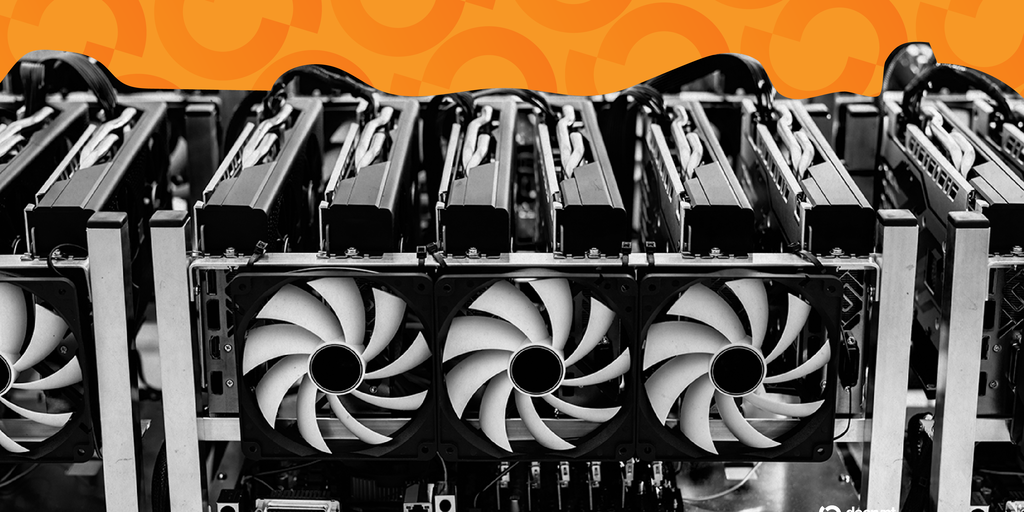We’re thrilled to share the awardees of XRPL Grants Wave 6, focusing on groundbreaking Web3 financial projects on the XRP Ledger (XRPL).
The response to the Wave 6 call for applications was remarkable, with 129 submissions from all over the world. After a comprehensive review process, we’re proud to support a total of 22 outstanding projects from 13 countries, resulting in a total funding amount of $1.3 million.
Each project was reviewed through a comprehensive judging process, and assessed by technical experts as well a global panel of judges from across academia, Web3, DeFi, Sustainability and other areas of expertise.
These awardees cover 14 distinct financial use cases, demonstrating the diverse applications of the XRP Ledger in the realm of decentralized finance, while 8 awardees mark an array of different innovative efforts that sees projects focusing on Developer Tooling, NFTs, Education, GameFi and Sustainability.
Learn more about the specific use case below and explore the full roster of Wave 6 awardees on the XRPL Grants website.
Interested in applying for funding for XRPL Grants? The next wave of applications will open in 2024! Subscribe for the newsletter to receive the latest updates at xrplgrants.org.
DeFi Projects
DeXfi - The DeFi one-stop-shop
The ultimate DeFi one-stop-shop on the XRPL! Seamlessly trade, swap, provide liquidity on a single platform. DeXfi is led by an individual developer, Chris Winkler, who is based in Austria. He has received $50,000 in funding to help support the important progress has made so far. Learn about the project via their website.
EVM.Finance
EVM.Finance solves the issue of fragmentation, providing a single hub for balances, transactions, DeFi interfaces with token metrics, and provides a terminal to support orders into the XRPL and access all information needed for investors and traders.
The team is based in the US and are led by Alexander Barry, John Barry, Maks Zhakun. Find out more about the innovative open source project through Github.
FLUIDEFI InstiLink
By providing a user-friendly suite of tools, InstiLink bridges the gap between traditional institutions and the world of blockchain. The team are based in Canada and are led by Louis Sirico, Lisa Loud, Fabian Kroll.
They have received $100,000 in funding as they aim to move forward with their efforts toward institutional adoption. Learn more about the exciting project via their website.
REDIMI - XRP Passport
XRP Passport aims to build a decentralized digital identity solution that empowers individuals to control their own identities while streamlining identity verification processes for decentralized finance (DeFi) applications & services.
There is a broad team based in Germany that consists of: Pierre Taner Kirisci, Zohaib Shahzad, Asad Khalid, Aleks Boskovski, Nadine Kamal, Abdul Samad. The project has received $100,000 in funding and you can learn more about their aims to build a decentralized digital identity on the project website.
VNX Stablecoins on the XRPL
VNX Commodities is Europe's first regulated tokenization platform and stablecoin issuer. The project is headed up by Wazen Shbair, Eugene Gavrilov who are based in Luxembourg. The project has received $100,000 in funding and you can learn more about the progress made via the project website.
Wolfram XRPL Exchange Data Infrastructure
Wolfram Blockchain Labs’ (WBL) provides real-time data aggregation services from a wide range of CEXs and DEXs.
The broader team is based in the US and consists of: Steph Macurdy, Gabriela Guerra, Jon Woodard, Maksym Kotov, Daniel Suarez, Johan Veerman, Karla Santana, Piero Sanchez, Alec Macher. The project has received $50,000 in funding and you can learn more about the team’s progress on the project website.
AI Projects
ChatXRP
ChatXRP transforms XRPL interaction, providing seamless access to Web3 services through a simple interface. Lead team member Chris Kuehl, based in the US, saw his project receive $75,000 in support. You can learn more about the project via their X account.
Education
EpicTask
The EpicTask Web3 platform combines a financial education learning environment with a seamless and efficient payment system.
The is led by Randy Nolden and based in the US. They have received $10,000 for their important efforts to educate the broader community. Learn about the project via their website.
Sustainability
EUA Carbon Token
Tokenized EU Carbon Allowances that allow retail investors to participate in the huge EU regulatory carbon markets. XRPL will provide the underlying stability mechanisms to create a token and allow it to track the real-world price of carbon.
The team, who are based in the UK is led by Gulliver Smithers, David McKie and Thomas Barker. They have received $50,000 in funding and you can lean more about their aims via their website.
Meta-Carbon
Meta Carbon's emissions tokenization tools allow companies to measure their carbon footprint and immutably store it online allowing for comparison over time as to how it is performing against its commitments to decarbonize.
The team is based in the US and is led by Tom Herman, Mark David, Andy Steward. They have received $150,000 in funding to help realize their ambitious goals.
Developer Tooling Projects
Indicator Success Rate (ISR)
ISR is a RESTful API platform equipped with integrated XRPL wallets and XUMM authentication. It offers an array of cryptocurrency trading indicators, delivering invaluable insights to traders to augment their trading strategies.
The team is led by Mario Stumpo, Gilles Chemla, Ilaria Morelli who are based in Poland. They have received $10,000 in funding and you can learn more about their efforts on their website.
Quidli - Integration of the XRPL & CRP
Quidli is a social middle layer between web3 assets and Web 2.0 collaboration apps for users to build token reward flows directly into the apps they use to digitally collaborate, starting with Discord and Slack.
The team is led by Luke Vignal, Guillaume Figielski, Justin Ahn and is based in France. They have received $10,000 in funding and you can learn more about their efforts via the project website.
Social Impact
MedLedger
MedLedger, aims to create a groundbreaking platform that merges Fast Healthcare Interoperability Resources (FHIR) standards with the XRP Ledger's (XRPL) secure and efficient blockchain technology.
The project is headed by an individual developer, Tushar Pardhe, from India. Tushar has received a $10,000 grant as he continues his work. Learn about his open source project on Github.
Tugela
Tugela is the AI-powered talent liquidity pool connecting African freelancers to the global economy. Leveraging XRP Ledger (XRPL) technology and the Interledger Protocol (ILP), Tugela enables frictionless cross-border payments, a store of value, and a gig matching engine built with Generative AI.
The team is based in Ghana and consists of Jeremy Banning, Sally-Anne Amakye, Kwame Frimpong Darkwa, Frederick Ankamah, Thokozani Mabena, Maya Diana Danquah. The team has received $50,000 in funding and you can learn more about the open source project on their website.
GameFi & NFT Projects
Ap0cene Phygital NFTs
Ap0cene Phygital NFTs allow you to create Web3 enabled garments and accessories for the future of phygital fashion e-commerce.
The team consisting of Sam Walker, Ariel Arakas, Andrew Fenlon, Ryan Beck are based in the US and received $75,000 in funding. The project is indeed open source and you can learn a great deal more about it on Github.
XRPL AI Signals by Liisa
Liisa helps NFT investors by analyzing the multifaceted landscape of NFT projects, considering both quantitative and qualitative factors like on-chain transactions, social activity, and NFT utilities.
The team is based in Portugal and consists of: Bernardo Silva, Paulo Peixoto, Kerim Tümkaya, Alexandre Collignon, Guilherme Leitão. The project has received $25,000 in funding and you can learn more about the team’s progress on the project website.
Nexus - Unity Toolkit
Nexus is an open-source toolkit that connects the Unity Game Engine and the XRP Ledger. By providing seamless XRPL wallet logins, real-time NFT generation, NFToken reconstitution, and advanced in-game transaction systems, Nexus empowers developers to create immersive gaming experiences with integrated blockchain technology.
The team is based in the US and led by Lawrence Plante, Jake Burkhalter, Kyle LeMaster, Derek Blasko. The project has received $150,000 in funding and you can learn more about the open source project on Github.
The Shillverse
The Shillverse is a Play2Mint NFT game on the XRPL. It provides a mix of classic idle and passive gameplay features, and has a Unity game in development.
The project is led by an individual developer, Steve Dodd, who is based in Australia. Steve’s project has so far received $10,000 in funding and you can learn about his progress on the project website.
XRPL4GD
An open source XRPL plugin that will extend the capabilities of the Godot engine. Game developers will be empowered to easily integrate core XRPL features into their games across a selection of different wallets.
The team is led by Jackson Sardello, Hudson Craft, Andrew Laitinen and is based in the US. They have received $50,000 in funding and you can learn more about the open source project via Github.
UniversalNFT.dev
The team describes the project as ‘one universal XRPL NFT format to rule them all.’ Automatic read-only translation from any popular existing NFT format/standard into Universal NFT.
The project is led by Jacob Pretorius who is based in the UK. The project has received $50,000 in funding and you can learn more about what it is building via the project website.
Zerpmon
Zerpmon is an engaging creature collecting game that leverages XRPL-based NFTs and tokens to enrich gameplay, ownership, and rewards for players.
The team is based in Australia and is led by Shen Morincome, Daniel Byers, Chris Lindmark, Steven Huling, Abdul Moin Khan. The grant sees the project pick up $25,000 in funding and you can learn about their progress on the project website.
Other
XRP for Salesforce
XRP for Salesforce is an open source data mapping layer from the XRPL to Salesforce. In addition to the open source Salesforce project, it includes relevant configuration of related Webhooks and any relevant JavaScript code to support the integration between XRPL and XRP for Salesforce.
Based in the US, the team is led by Zoe Braiterman, Alex Hochberger, Patryk Ustymczuk, Michal Bedliński. The project has received $100,000 in funding as they aim to transform the landscape of E-commerce. Find out more about the project and team on their website.
Diverse Innovators
Among the projects we see a diverse range of leaders and innovators with four of the funded projects led by women or non-binary individuals. This highlights a commitment to fostering inclusivity, and diverse perspectives within the XRPL ecosystem.
The financial backing provided includes microgrant funding for seven projects in the lowest tier ($10,000 or below) and substantial funding exceeding $100,000 for six projects. Notably, 55% of the awardees are based outside of the US, emphasizing the global reach and impact of the XRPL community.
These awardee statistics underscore the XRPL Grants Program’s dedication to supporting projects that address financial inequities, streamline traditional financial processes, and introduce innovative use cases for the XRP Ledger.
































